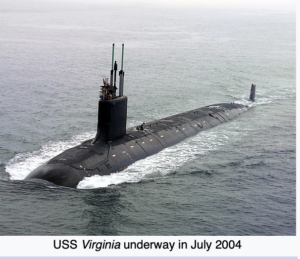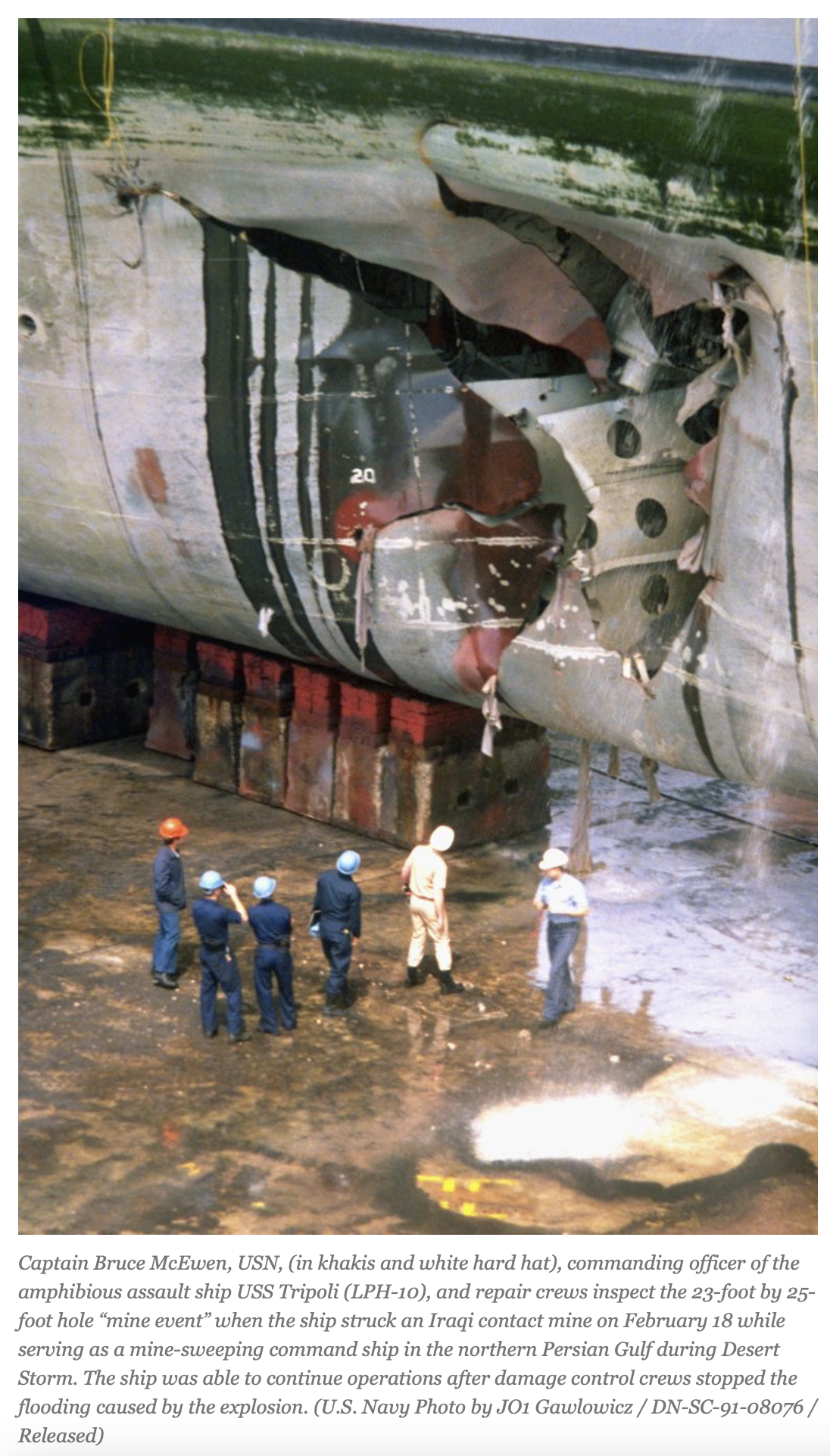By James C. Sherlock

The Department of the Interior (DOI) is unlikely to be expert in the diplomatic issues and defense vulnerabilities inherent in building wind turbine farms in international waters.
The DOI is, however, greatly concerned with “viewscape” – whether the turbine blades can be seen from shore. By the wealthy who live there and those who visit.
DOI’s Bureau of Ocean Energy Management (BOEM), which will issue or deny in March a construction permit to Dominion Energy to build its Coastal Virginia Offshore Wind (CVOW) project in international waters, may understand the fact that the United States is a signatory to the United Nations Convention on the Law of the Sea (UNCLOS).
They may or may not be aware that the U.S. has done more to enforce UNCLOS than any other nation on earth.
They may or may not fully understand that UNCLOS will severely constrain U.S. rights surrounding wind turbine projects in international waters in ways that will bedevil us constantly, drive up national defense costs and threaten the long-term viability of the projects.
If they do understand the implications, they may consider that the business of the Departments of Defense and State.
So do I. Those two departments have dropped the ball.
DOI may not understand that all of those issues are greatly mitigated if the turbine farms are within 12 miles from the coast. But DoD and State should.
And Congress should.
The House Armed Services Committee should hold hearings before the CVOW permit is approved.
Issues. Dominion’s CVOW project, if built, will be in international waters, outside U.S. territorial seas which extend 12 miles from our coasts.
It therefore will not be protected by the rules governing innocent passage in territorial seas under UNCLOS Article 19.
Activities that in innocent passage are deemed prejudicial to the peace, good order or security of the coastal state are prohibited there. They are not proscribed in international waters.
I spent much of my adult life on aircraft carriers mindful of those laws.
We launched and recovered aircraft, dropped inert bombs, and used live ordnance to sink target ships towed into international waters for the purpose. As battle groups we generally exercised the military power of the United States Navy in international waters.
CVOW will be within the United States’ Exclusive Economic Zone, but sovereignty around CVOW will extend only to 500 meters from the outermost towers. So no help there.
Even in peacetime we can legally lay mines anywhere in international waters if those mines must be actively turned on and are safe until activated.
Those same rules apply to mines laid by foreign navies.
Sauce for the goose.
See how complicated this gets?
Mine Warfare in International Waters. It is possible, and probably likely, that the United States Navy will, when able, defend wind turbine fields outside its territorial waters with antisubmarine mines.
The new edition of the U.S. Navy Commander’s Handbook on the Law of Naval Operations Section 9.2.2 permits peacetime mining with mines that are harmless until activated.
Controllable mines may be emplaced in international waters (i.e., beyond the territorial sea) if they do not unreasonably interfere with other lawful uses of the oceans.
The determination of what constitutes an unreasonable interference involves a balancing of a number of factors, including the rationale for their emplacement (i.e., self-defense requirements of the emplacing nation), the extent of the area to be mined, the hazard (if any) to other lawful ocean uses, and the duration of their emplacement.
Because controllable mines do not constitute a hazard to navigation, international notice of their emplacement is not required.
But a May 2021 article in Naval Institute Proceedings was highly critical of the Navy’s mining capabilities.
the Navy continues to relegate mine warfare—mines, mining, and mine countermeasures—to a budgetary, strategic, and operational backwater.
Because CVOW is to be constructed in international waters, no other nation will have to give notice of minelaying either. The U.S. and potentially hostile nations will disagree on what constitutes an acceptable rationale for their emplacement.
From an expanded version of the USNI article:
Potential U.S. adversaries—from China and Russia to violent extremists—take advantage of the asymmetric value of mines, some quite sophisticated and lethal and others unsophisticated but still quite lethal. The global threat includes: Russia, anywhere from 125,000 to a million mines; upwards of 80,000 are in Chinese inventories; as many as 10,000 enhance North Korea’s navy; Iran has about 6,000; and unknown numbers are in terrorist hands. In June 2021, for example, Houthi rebels warned about “some hundreds of sea mines” laid in Red Sea and Arabian Sea ports and waterways..
Naval mines worldwide number about one million not counting U.S. stockpiles. Sixty nations have them. More than 30 countries produce and 20 countries export them.
The mine that severely damaged the Aegis guided-missile cruiser USS Princeton (CG-59) in the Northern Persian Gulf during Desert Storm was made in Italy.
It wasn’t the only one. The damaged USS Tripoli (LPH-10) is seen below.
Even sophisticated torpedo mines are available in the international arms market. The U.S., in fact, sold MK-60 CAPTORS that we no longer use. Torpedo mines will work against submarines or ships when activated.
But mines will work in offshore turbine fields for every nation whatever the target. Disrupting power for hundreds of thousands ashore will prove a tempting one. More effective than sinking a ship.
U.S. mine clearing capabilities are in worse shape than our mine laying ones. A robot anti-mine submarine is planned for the Littoral Combat Ships, which have been a disaster. The Navy is decommissioning them as fast as it can.
Those capabilities were not sized to protect offshore wind farms.
Submarines. As for potentially hostile submarines, under UNCLOS Article 20 Submarines and other underwater vehicles,
In the territorial sea, submarines and other underwater vehicles are required to navigate on the surface and to show their flag.
In international waters, those restrictions do not apply.
Exclusive Economic Zone. American offshore wind farms in international waters will be within the U.S. Exclusive Economic Zone (EEZ) governed by UNCLOS Article 56 Rights, jurisdiction and duties of the coastal State in the exclusive economic zone
1. In the exclusive economic zone, the coastal State has sovereign rights for the purpose of the production of energy from the water, currents and winds; (b) jurisdiction as provided for in the relevant provisions of this Convention with regard to: (i) the establishment and use of artificial islands, installations and structures;
UNCLOS Article 60 Artificial islands, installations and structures in the exclusive economic zone
2. The coastal State shall have exclusive jurisdiction over such artificial islands, installations and structures, including jurisdiction with regard to
customs, fiscal, health, safety and immigration laws and regulations.4. The coastal State may, where necessary, establish reasonable safety zones around such artificial islands, installations and structures in which it may take appropriate measures to ensure the safety both of navigation and of the artificial islands, installations and structures.
5. The breadth of the safety zones shall be determined by the coastal State, taking into account applicable international standards. Such zones shall be designed to ensure that they are reasonably related to the nature and function of the artificial islands, installations or structures, and shall not exceed a distance of 500 metres around them, measured from each point of their outer edge, except as authorized by generally accepted international standards or as recommended by the competent international organization. Due notice shall be given of the extent of safety zones.
6. All ships must respect these safety zones and shall comply with generally accepted international standards regarding navigation in the vicinity of artificial islands, installations, structures and safety zones.
8. Artificial islands, installations and structures do not possess the status of islands. They have no territorial sea of their own, and their presence does not affect the delimitation of the territorial sea, the exclusive economic zone or the continental shelf.
So CVOW can have a 500 meter safety zone in which Dominion and the Navy may take “appropriate safety measures”. Some of the more exotic defense concepts I have heard discussed by amateurs are not safety measures.
Bottom line. So, in international waters, we are left with
- our attack submarines against other submarines, in which we have the advantage if the numbers can be kept under control; and
- weak capabilities to clear mines that can destroy ships or turbine towers.
The Department of the Interior has put leasable areas in international waters for only one reason. So that folks on the coasts will not have to see them.
I hold the Department of Defense and the Department of State responsible for this folly. It is not their business to care about “viewscape.”
It is necessary to ask whether DoD and DoS have informed the Department of the Interior in no uncertain terms of the endless diplomatic and national defense problems they will buy with turbine fields in international waters.
And to ask why they did not veto the idea in the councils of government.
If we move the wind farms into territorial waters, we can aggressively defend them. And, God willing, we will move them away from high value shore installations and ports.
Away from the mouth to the Chesapeake Bay and the approaches to the world’s largest naval base.
That reference, for the benefit of the DOI leadership, is to the home of the United States Atlantic Fleet.
So, move the wind farms inside of 12 miles.
If a potentially hostile sub shows up submerged, sink it. If a minelayer shows up, blow it out of the water. Problem solved.
Maybe the House Armed Services Committee will get it.


Leave a Reply
You must be logged in to post a comment.